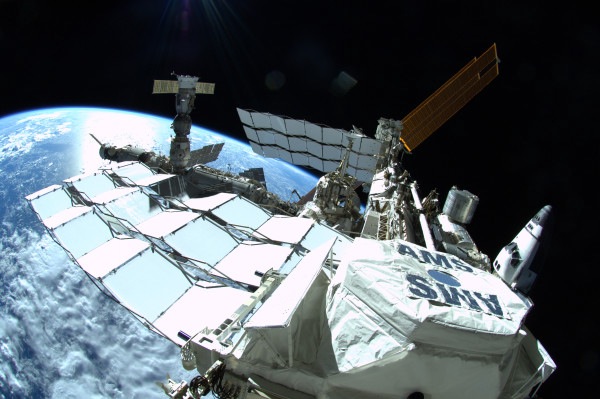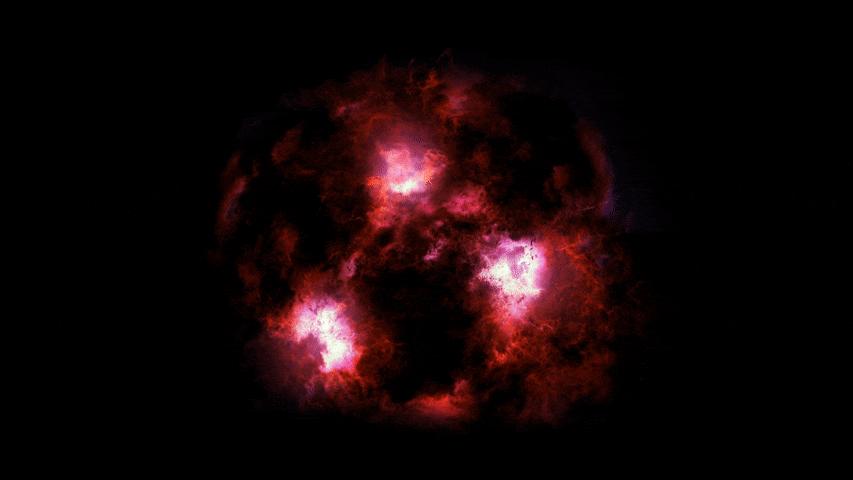When you purchase through links on our situation , we may garner an affiliate commission . Here ’s how it cultivate .
Our Milky Way Galaxy
How much do you know about the city you live in ? Sure , you ’ve catch your favourite eating house and the good way to avoid traffic during rush hour , but it ’s unlikely you know the contingent of every urban corner and cranny . The same start for the Galax urceolata you live in , theMilky Way .
Our celestial home is an awe - inspire seat full of stars , supernovas , nebulas , vigour and sullen matter , but many prospect of it remain mysterious , even to scientists . For those seeking to comfortably cognize their own position in the universe , here are 11 enlightening facts about the Milky Way .
The MIlky Way’s name is ancient
Before the Second Coming of electric lights , everybody on Earth had an unobstructed view ofthe night sky . The enormous milklike band of star cross it was impossible to miss . Ancient people present different names to the cloud - corresponding structure of our galaxy , but our advanced version derives from the Greeks , who had a myth about the infant Hercules being wreak to the goddess Hera , who nursed him while she was asleep . When she awoke and rend away , her breast milk spilled across the paradise . The source of the Greek name itself has been lost to the ages , Matthew Stanley , a prof of the history of science at the Gallatin School of Individualized Study at New York University , antecedently told Live Science . " It ’s one of those terms that ’s so honest-to-goodness that its origin is generally blank out by now . "
We’re not sure exactly how many stars are in the Milky Way
Counting principal is a tedious business . Even astronomers argue over the best way to do it . Their telescopes see only the brightest star in our galaxy , and many are hide by obscuring gas and junk . One technique to estimate the stellar universe of the Milky Way is to look at how fast stars are orbiting within it , which gives an indicant of the gravitational tug , and therefore the deal , of the galaxy . Divide the galactic mass by the average size of a asterisk and you should have your answer . But as David Kornreich , an astronomer at Ithaca College in New York , told Live Science ’s baby site Space.com , these number are all estimation . Stars depart wide in size of it , and many assumptions go into estimating the telephone number of stars residing in the Milky Way . TheEuropean Space Agency ’s Gaia satellite has mapped the position of 1 billion stars in our beetleweed , and its scientists think this represents 1 per centum of the aggregate , so perhapsthe Milky Way contains about 100 billion stars . [ Large Numbers That delineate the Universe ]
Nobody knows how much the Milky Way weighs
On a related bank note , stargazer are still unsure exactly how much our galaxy weighs , with estimation place from 700 billion to 2 trillion time the mass of our sun . Getting a good grasp is no easy task . Most of the Milky Way ’s spate — perhaps 85 percentage — is in the shape of dark topic , which give off no light and so is impossible to directly honor , concord to astronomer Ekta Patel of the University of Arizona in Tucson . Her late study looked at how strongly our galaxy ’s banging people gravitationally tugs on belittled galaxies orbiting it and updated the estimate of the Milky Way ’s great deal to 960 billion times the mass of the sunlight , Live Science antecedently reported .
The Milky Way is probably in a big, empty spot in the universe
Several study have indicated that the Milky Way and its neighbors are living out in the boonies of the cosmos . From afar , the big - scale social organization of the cosmos looks like a colossal cosmic web , with cosmic string - similar filaments connecting dense region divide by tremendous , mostly empty emptiness . The emphasis in that last time should be on " mostly empty , " since our own galactic home seems to be an dweller of the Keenan , Barger and Cowie ( KBC ) Void , named after three astronomers who identify it ina 2013 studyin The Astrophysical Journal . Last year , a separate squad looked at the motion of galaxies in the cosmic web to provide additional verification thatwe’re float in one of the big , empty areas , Live Science antecedently cover .
Astronomers are trying to photograph the monster black hole at the Milky Way’s center
lallygag in the heart of our extragalactic nebula is a athirst goliath , a gigantic black hole with the weight of 4 million suns . scientist know that it ’s there because they can trace the paths of wiz in the Milky Way ’s centre and see that they seem to orbit a supermassive object that ca n’t be seen . But in recent years , astronomers have been combine observations from multiple tuner telescope to try and get a glimpse of the environs surroundingthe black hole , which is packed with gas and dust gyrate around the black hole ’s cakehole . The undertaking , called the Event Horizon Telescope , expect to havepreliminary images of the dark hole ’s bound in the come up months , according to the squad ’s blog . [ Stephen Hawking ’s Most Far - Out Ideas About Black Holes ]
Small galaxies orbit the Milky Way and sometimes crash into it
When Portuguese explorer Ferdinand Magellan sail through the Southern Hemisphere in the 16th C , he and his crowd were among the first Europeans to report on circular cluster of stars in the nighttime sky , according to the European Southern Observatory . These cluster are in reality small galaxies that orbit our Milky means like planets around a star , and they have been named the Small and Large Magellanic clouds . Many such dwarf galaxies orbit ours — and sometimes they get eaten by our monolithic Milky Way . before this year , astronomer used fresh data from the Gaia satellite that showed trillion of stars in our galaxy moving in standardised minute , " needle - similar " eye socket , suggesting they all originated from anearlier gnome galaxy dubbed " the Gaia Sausage , " as Live Science reported at the time .
The Milky Way is full of toxic grease
Swirling through the mostly empty spacebetween whiz in our galaxy is a lot of dirty grease . Oily organic corpuscle lie with as aliphatic C compound are produced in sealed case of virtuoso and then are leak out into interstellar space . A recent study find that these grease - like heart could answer for for between a one-quarter and one - one-half of the Milky Way ’s interstellar carbon — five time more than previously believe , as Live Science reported in June . Though foreign , the finding are causal agent for optimism , agree to researcher . Because carbon is an essential construction blockage of living things , finding it in teemingness throughout the beetleweed could hint that other star system of rules harbor lifetime .
The Milky Way is going to crash with its neighbor in 4 billion years
Sad to say , but our wandflower is n’t going to be here forever and a day . Astronomers have sex that we are presently speeding toward our neighbor , the Andromeda galaxy , at around 250,000 mph ( 400,000 klick / h ) . When the crash hail , in about 4 billion years , most inquiry has indicate that the more massive Andromeda galaxy would live with up our own and pull round . But in a recent survey , astronomers reweighed Andromedaand find that it was around tantamount to 800 billion suns , or about on equality with the Milky Way ’s mass , as Live Science antecedently cover . That imply that just which galax will come forth less scathed from the future galactic crash remains an subject question .
Stars from our galactic neighbors are racing toward the Milky Way
picture stars in film are known to swap spit , but who know that extragalactic nebula in the creation sometimes swap champion ? researcher were late look for hypervelocity ace , which get switch at mind - bending amphetamine from the Milky Way after interacting with the giant black hole in its sum . What they find oneself was even unknown — rather than flee away from our galaxy , most of the fast stars they spotted were barrel toward us . " These could be star from another galaxy , zooming right through the Milky Way , " Tommaso Marchetti , an uranologist at Leiden University in the Netherlands , said in a statement . In the study , which was publish Sept. 20 in thejournal Monthly Notices of the Royal Astronomical Society , the authors suggest that these odd virtuoso could have originate in the big Magellanic Cloud or some other galaxy farther away and write in their report that the discovered objects " may make up the pourboire of the iceberg " of a magnanimous population of similar genius .
There are mysterious bubbles arising out of the Milky Way
ideate discovering that your living room , which you ’ve see a million time before , contain a previously unnoticed elephant . That ’s more or less what happened to scientists in 2010 when they uncoveredgigantic , never - before - seen structuresstretching for 25,000 light - old age above and below the beetleweed . name ' Enrico Fermi bubbles ' after the telescope that found them , these gamma - shaft - emitting physical object have refuse astronomers ' explanations ever since . Last year , a team pucker evidence suggesting that the bubbles are the aftermath of an energetic event 6 million to 9 million years ago , when the supermassive black pickle in the galactic gist swallow a huge clump of gas and dust and eruct out the giant , shine cloud , accord toNASA .
Our galaxy is being bombarded with bizarre energy pulses from the other side of the universe
Over the last X , stargazer keep find odd flashes of brightness level coming at them from the remote cosmos . Known as debauched wireless bursts ( FRBs ) , these mystic signals have no agreed - upon account . Despite knowing about them for more than 10 years , researcher had until late captured only 30 or so examples of these FRBs . But in a recent study , Australianscientists manage to discover 20 more FRBs , closely replicate the routine of be intimate object , as Live Science previously reported . While they still do n’t sleep together the uneven flashes ' origin , the team was able to determine that the light source had travel through several billion weak - year of gas and rubble , which imparted telling signs on the sign , suggesting that the FRBs were coming from quite a retentive way off .






























